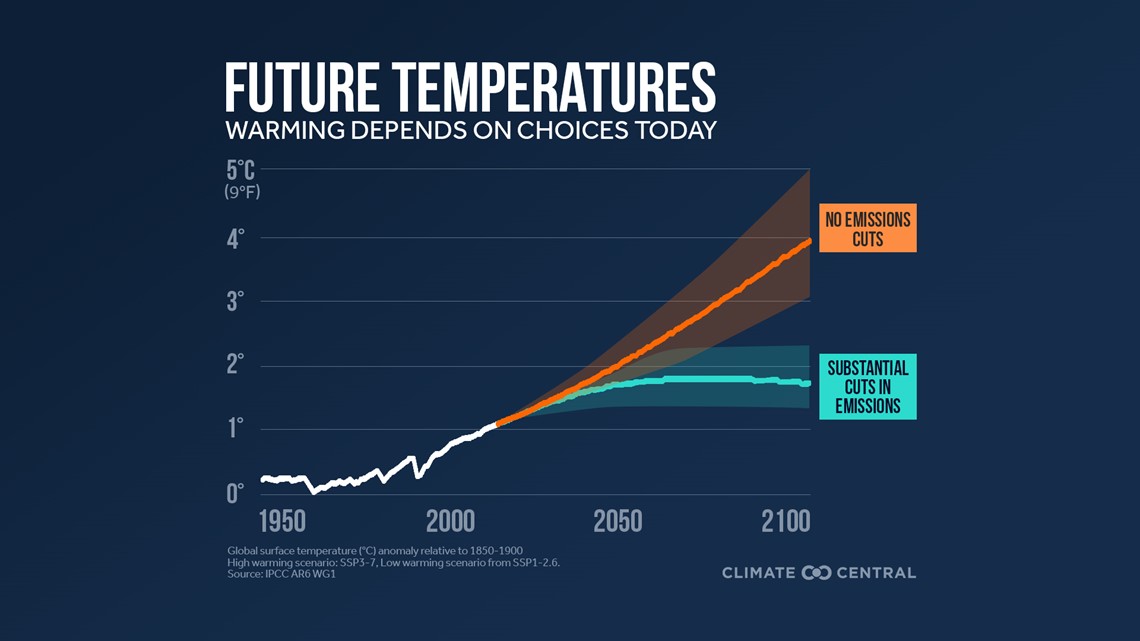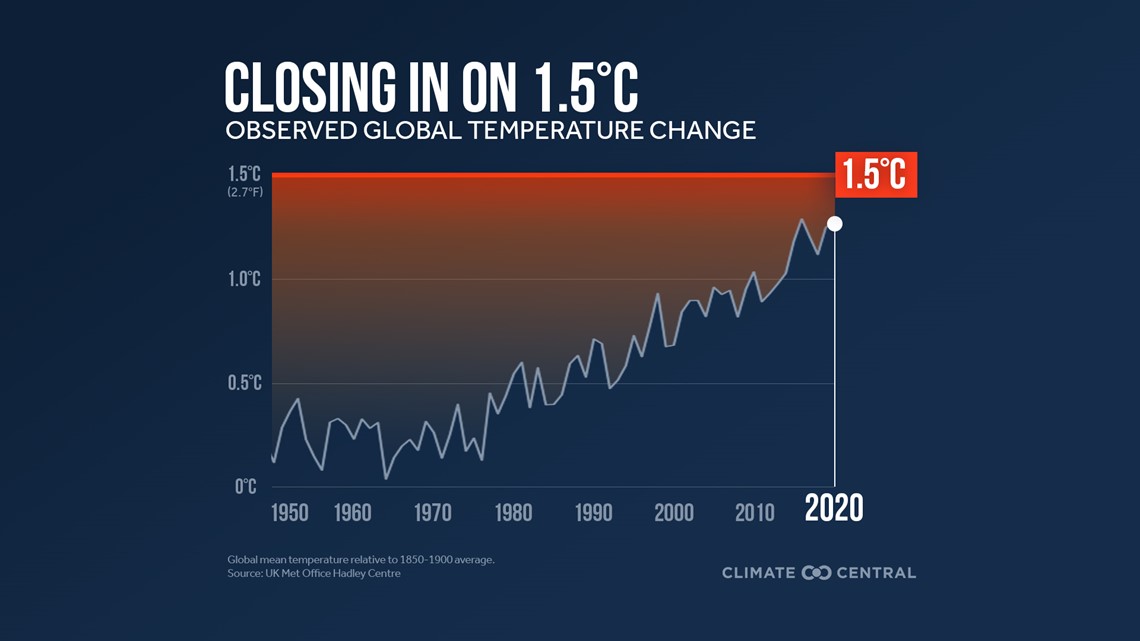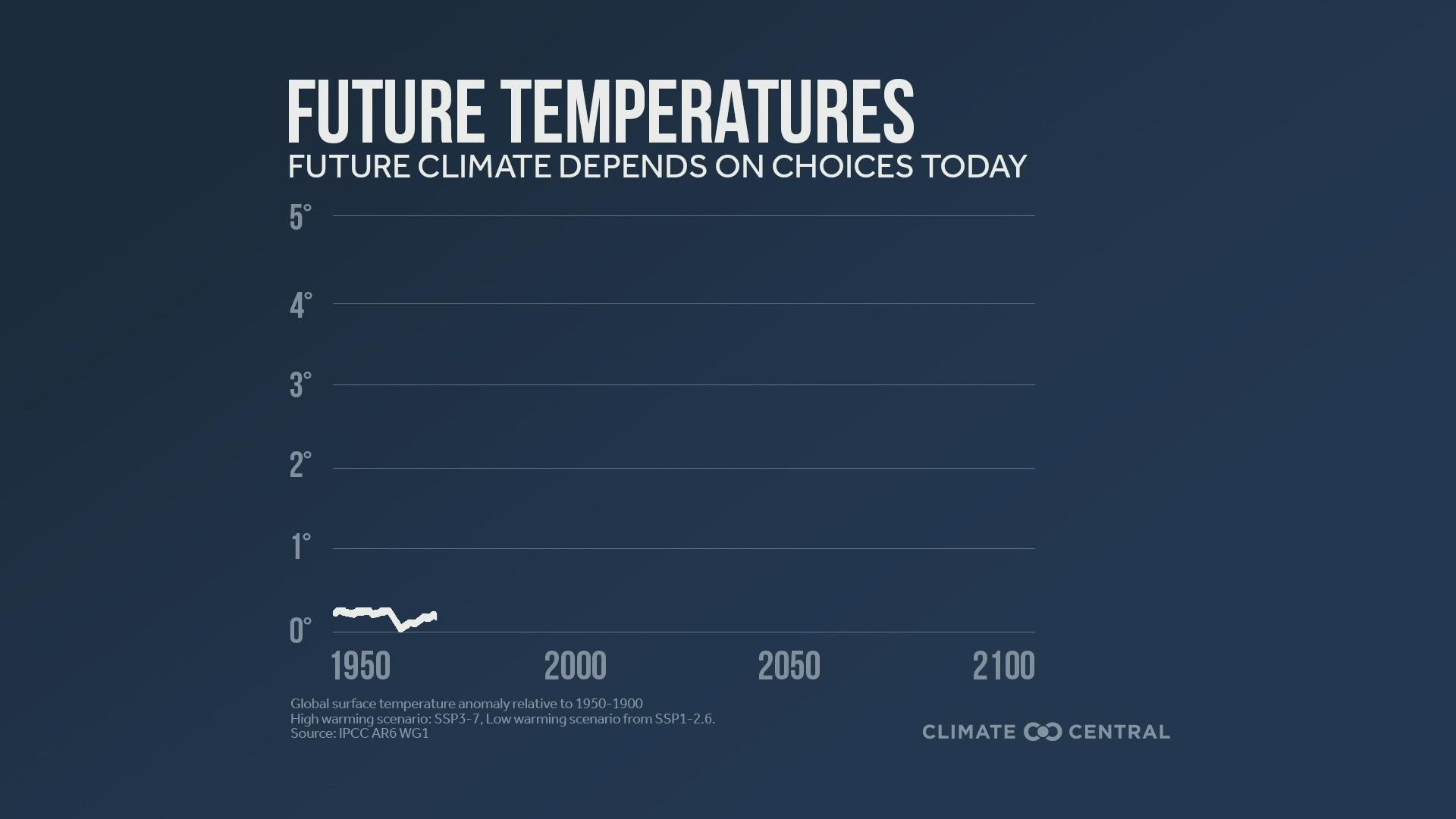GREENSBORO, N.C. — Climate change still stands as one of the leading conversations among scientists and policymakers. The climate is the general weather conditions you use to describe an area over a longer period of time including average seasonal temperatures, rainfall, sunshine, etc. So, for example, the climate for North Carolina during the summer can be described as hot and humid. Unlike climate, weather is described by the current state of the atmosphere at a place and time including the temperature, humidity, precipitation, cloud cover, etc. When you watch a WFMY News 2 meteorologist during a newscast, they are likely giving you the weather and forecasting future weather.


Monday, the Intergovernmental Panel on Climate Change (IPCC), the United Nation's group designated to asses the science related to climate change, released alarming statistics related to the state of our climate and the possible climate future.
Below are key findings about the current state of the climate:
1. Human influence has warmed the atmosphere.
2. The magnitude of the changes currently observed in the climate system are unprecedented.
3. Human influences are increasing the quantity of weather extremes across the globe.
Below are key findings about the current state of the possible climate future:
1. Global warming will continue unless greenhouse gas emissions like carbon dioxide are substantially reduced.
2. The intensity and frequency of climate extremes like intense tropical cyclones will continue to increase due to increasing global warming.
3. Global warming will intensify monsoonal events including wet and dry events.
4. With a projected increase in carbon dioxide emissions, the natural processes that act to remove carbon dioxide from the atmosphere will not be as effective.
5. Past and future greenhouse gas emissions are irreversible for centuries and longer.


The most common greenhouse gases in Earth's atmosphere include water vapor, carbon dioxide, methane, nitrous oxide and ozone. All of these gases naturally occur in the atmosphere; however, certain everyday activities can help to increase their amount. An overabundance of these gases can help to further warm the globe.


There are many ways you can work to reduce your carbon footprint or your overall contribution to a worsening climate.
Here is a list of 10 ways you can reduce greenhouse gases in our atmosphere:
1. Eat low on the food chain.
2. Use less A/C or heat.
3. Reduce, recycle and reuse.
4. Use energy-efficient products
5. Plant a tree.
6. Use less water.
7. Buy green electricity.
8. Use non-toxic household products.
9. Use the "off" switch.
10. Drive less.
If you'd like to read the full climate report, check it out here.

